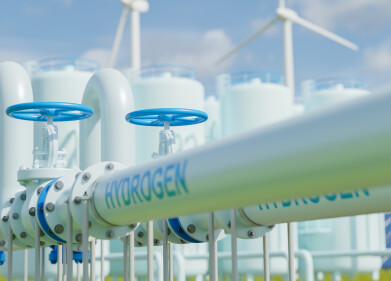Fuel for Thought
An Introduction to the Different Types of Crude Oil
Jul 25 2014
Though we have a tendency to lump together all varieties of oil under a single, three-letter-word, there are in fact a multitude of different strains of crude oil. It can vary hugely in density and colour, from a very light, freely-flowing golden-hued substance to a much heavier, slower-moving material that is black as black can be.
However, for the purposes of its use and refining, the most important variables are not its colour or its weight, but instead its volatility, its viscosity and its toxicity.
Volatility refers to how low its boiling point is and how easily it can be converted from a liquid into a gas. If an oil is highly volatile, extra care will need to be taken to ensure it is not exposed to high temperatures or stored in containers that are not airtight.
Viscosity refers to the thickness of the liquid, and specifically, how quickly or easily it will flow. The higher the viscosity, the harder the oil is to mine, transport and refine.
Toxicity refers, unsurprisingly, to how poisonous a substance will be during the refining process and in case of spillage or leakage. This affects not only the people handling it, but also the environment in a wider context.
The Four Main Types of Oil
Light Distillates
These include, among others, gasoline, kerosene, jet fuel and several varieties of petroleum. They are generally very volatile and evaporation can occur within a matter of days, which means that their toxicity levels are low since they diffuse quickly.
Middle Distillates
These include the majority of Grade 1 and 2 fuel oils and diesels, along with domestic fuel. They are moderately volatile, which means they will retain their toxicity for longer.
Medium Oils
This category accounts for the majority of crude oil to be found in the marketplace. Because these oils do not evaporate quickly, clean-ups after spillages and leakages can be long drawn-out affairs, with much damage to the surrounding ecosystems.
For recent examples of such spills and the devastating consequences they can have, check out this news stories: China Oil Leak Affects Water for Millions and North Dakota Suffers Two New Oil Spills.
Heavy Fuel Oils
These include Grade 3, 4, 5 and 6 fuel oils and intermediate and heavy marine fuels. Because evaporation is incredibly slow with these oils, toxicity lingers in the atmosphere for seriously hazardous lengths of time, potentially having long-term effects on the surrounding environment.
Brands of Crude Oil
There are almost 200 different varieties of oil available for sale today, but the three most common and most talked about are West Texas Intermediate (WTI), Brent Blend and OPEC Basket.
- WTI is one of the highest quality and, as a result, most expensive types of crude oil available.
- Brent Blend is produced in northern Europe and although its levels of quality are not as high as WTI, it is still a good quality option.
- OPEC Basket, named for the Organisation of Petroleum-Exporting Countries, is high in sulphur and as a result, poorer quality… but significantly cheaper.
Digital Edition
PIN 25.5 Oct/Nov 2024
November 2024
Analytical Instrumentation - Picturing Viscosity – How Can a Viscometer or a Rheometer Benefit You? - Sustainable Grease Formulations: Evaluating Key Performance Parameters and Testing Method...
View all digital editions
Events
Nov 26 2024 Paris, France
Nov 26 2024 Amsterdam, Netherlands
Nov 27 2024 Istanbul, Turkey
Biogas Convention & Trade Fair 2024
Nov 27 2024 Hanover, Germany
Dec 03 2024 Dusseldorf, Germany



















